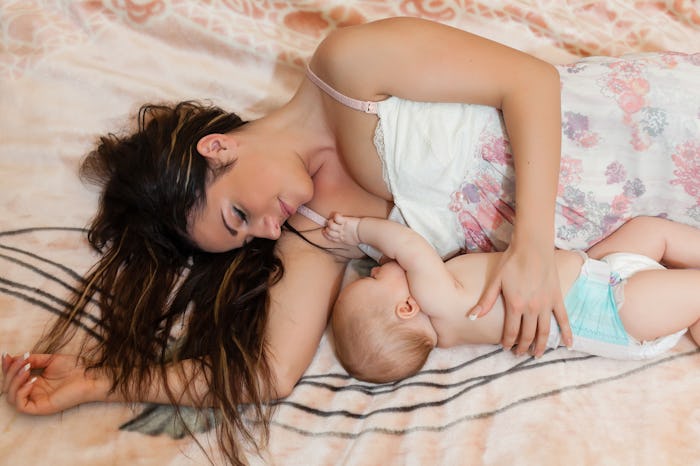Life

How To Breastsleep So You And Your Baby Get More Rest At Night
Co-sleeping is one of the more controversial aspects of parenthood, with people falling anywhere from full acceptance, to being uneducated about what it actually means, to believing it is unsafe for the baby. But luckily for pro-bed-sharers, there has been a push to understand and normalize safe co-sleeping. Breastsleeping is one such "new" term coined to encourage the practice even more. Many mothers are learning how to breastsleep, and realizing that it's much more natural than society leads us to believe.
Although the method of sleeping isn't new at all, researchers and co-sleeping experts James McKenna and Lee Gettler's article published in 2015 in Acta Paediatrica defines the goal of breastsleeping:
"Breastsleeping" [is] aimed to help both resolve the bed-sharing debate and to distinguish the significant differences (and associated advantages) of the breastfeeding–bed-sharing dyad when compared with the non-breastfeeding–bed-sharing situations, when the combination of breastfeeding–bedsharing is practiced in the absence of all known hazardous factors.
Breastsleeping is simply a term to encompass what many bed-sharing mothers already do — nurse while they're in bed or asleep. It is believed to promote a healthy mother-child relationship, help both sleep better, has has numerous developmental benefits for the baby, according to Breastfeeding Place.
But how exactly do you breastsleep? According to Fit Pregnancy, breastsleeping is essentially breastfeeding while bedsharing. You share a bed with your baby and nurse them on demand during the night. According to McKenna, breastsleeping is a much safer environment than bottle feeding and bed-sharing, since if the mother is breastfeeding, she's more sensitive to the behavior of the baby, and they both sleep in lighter phases, so they're easier to wake.
It's an intuitive process that doesn't really require a "how-to" manual, making it even more appealing for new (and exhausted) mothers. Since studies, like this one published in the Oxford Journals, note a decreased risk of SIDS for babies who are breastfed, and since mothers who breastsleep safely (without any substance use or extra pillows, etc.) the risks posed to baby while breastsleeping are relatively miniscule.
Is breastsleeping for you? It might be a newly coined "trend," but it's a practice that has been around for much longer than the name.